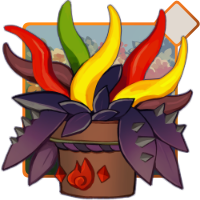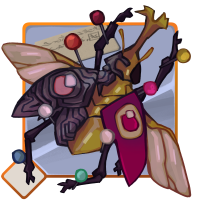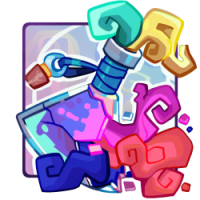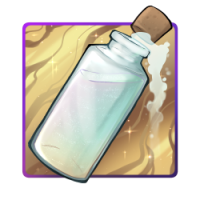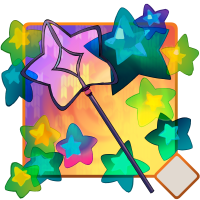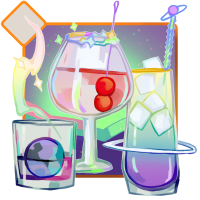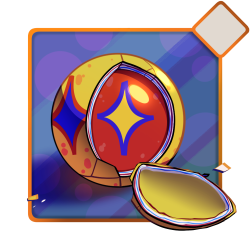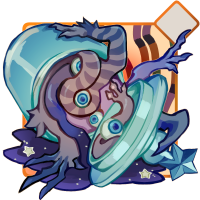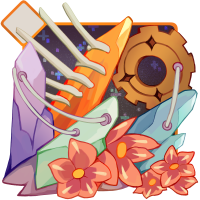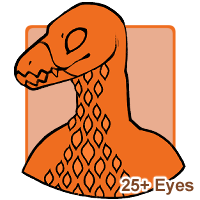
25+ Eyes
(Myth)
25+ Eyes (Myth)
Click to search ML for trait[Total number of Cluster eyes is over 25]
- Counts for the total number of eyes across all clusters
- Does not include True Eyes in total
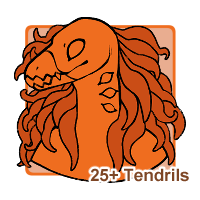
25+ Tendrils
(Myth)
25+ Tendrils (Myth)
Click to search ML for trait[25 or more Tendrils]
- Tendrils can differ or be similar
- Counts as total number for all tendrils across the body
- Tendrils may not heavily obscure the design

Overgrown Tendrils
(Myth)
Overgrown Tendrils (Myth)
Click to search ML for trait[Tendrils that are very clearly larger than are proportional to the character]
- Can affect one part of the tendril or the entire tendril
- Can effect all or only certain tendrils

Can be applied by:

Tendrils on Lower Body
(Myth)
Tendrils on Lower Body (Myth)
Click to search ML for trait[Tendrils are located somewhere other than the head/neck]
- Tendrils are located anywhere below where the neck meets the shoulders
- Can be placed on the ears, Horns/Spikes, wings, limbs, etc
- Tendrils can be asymmetric, placed in multiple spots, or dispersed across the body
- If Tendrils are located on the wings, when the wings are hidden, the tendrils are automatically placed on the closest part of the back
- This trait also allows for Tendrils to be placed on the face, forehead, and standard head/neck placements without the need for additional traits
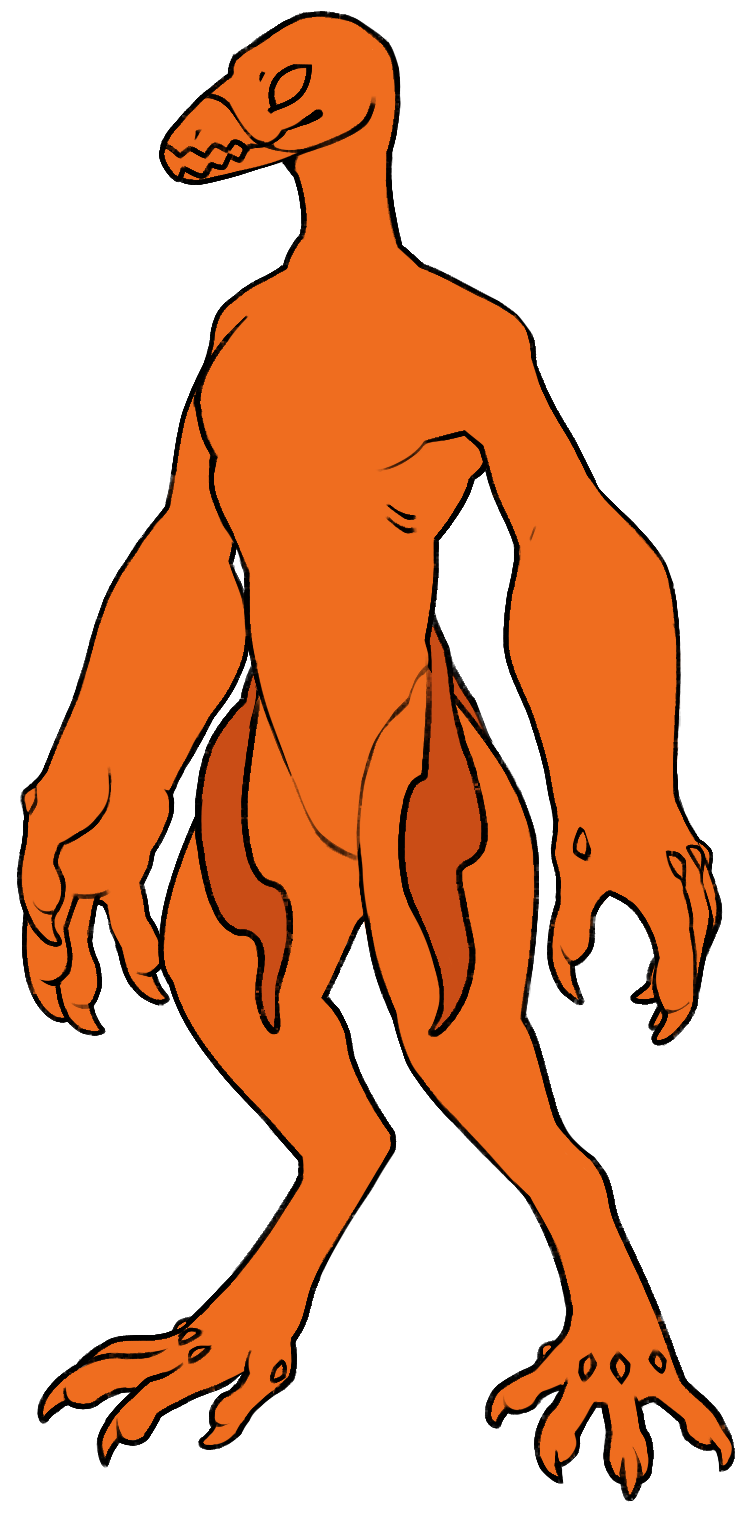
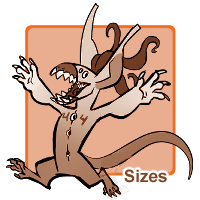
Crook Sizes (Myth)
(Myth)
Crook Sizes (Myth) (Myth)
Click to search ML for traitAvailable to Crooks that possess a myth trait or higher. Does not count as an extra trait.
- Chibi Size - [Min 5’0”]
- Monster Size - [Max 10’0”]
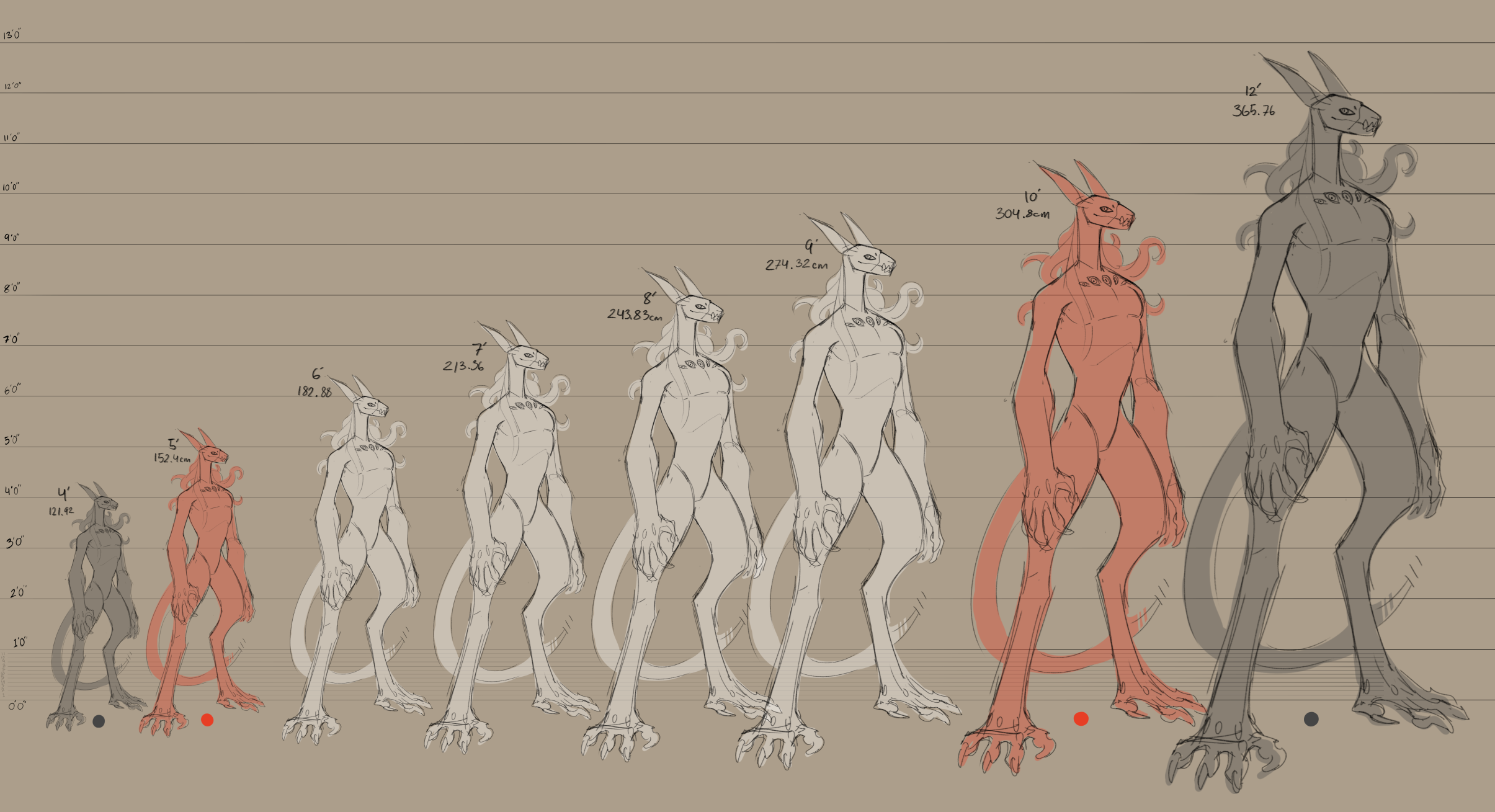

Sparkling Coat
(Myth)
Sparkling Coat (Crooks) (Myth)
Click to search ML for trait[Entire design that sparkles and reflects light akin to glitter]
- Inlcudes Sparkling Eyes and Sparkling Tendrils without the need for additional traits
- Can be any color, but sparkles must share hue with the base color of the markings
- Can affect the particles originating from the Particle Tendrils or Particle Markings traits, allowing them to be purely sparkles
- Affects any color/marking on the body
- Can affect the teeth, tongue, claws, blood, bones, and organs
Can be applied by:
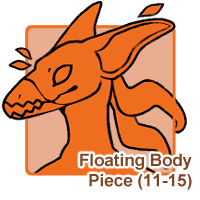
Floating Body Piece (11-15)
(Myth)
Floating Body Piece (11-15) (Crooks) (Myth)
Click to search ML for trait[Small, shaped object floating separately from the body]
- Must be an extension from an existing part, such as an ear, horn, tail tip, fur, etc.
- Must match a color that appears on the body, but may have patterning and be affected by marking traits
- May be shaped as long as they appear to be a continuation of a body part
- May be symmetrical or asymmetrical
- Cannot resemble objects
- Cannot be shapes that float around the body purely independantly
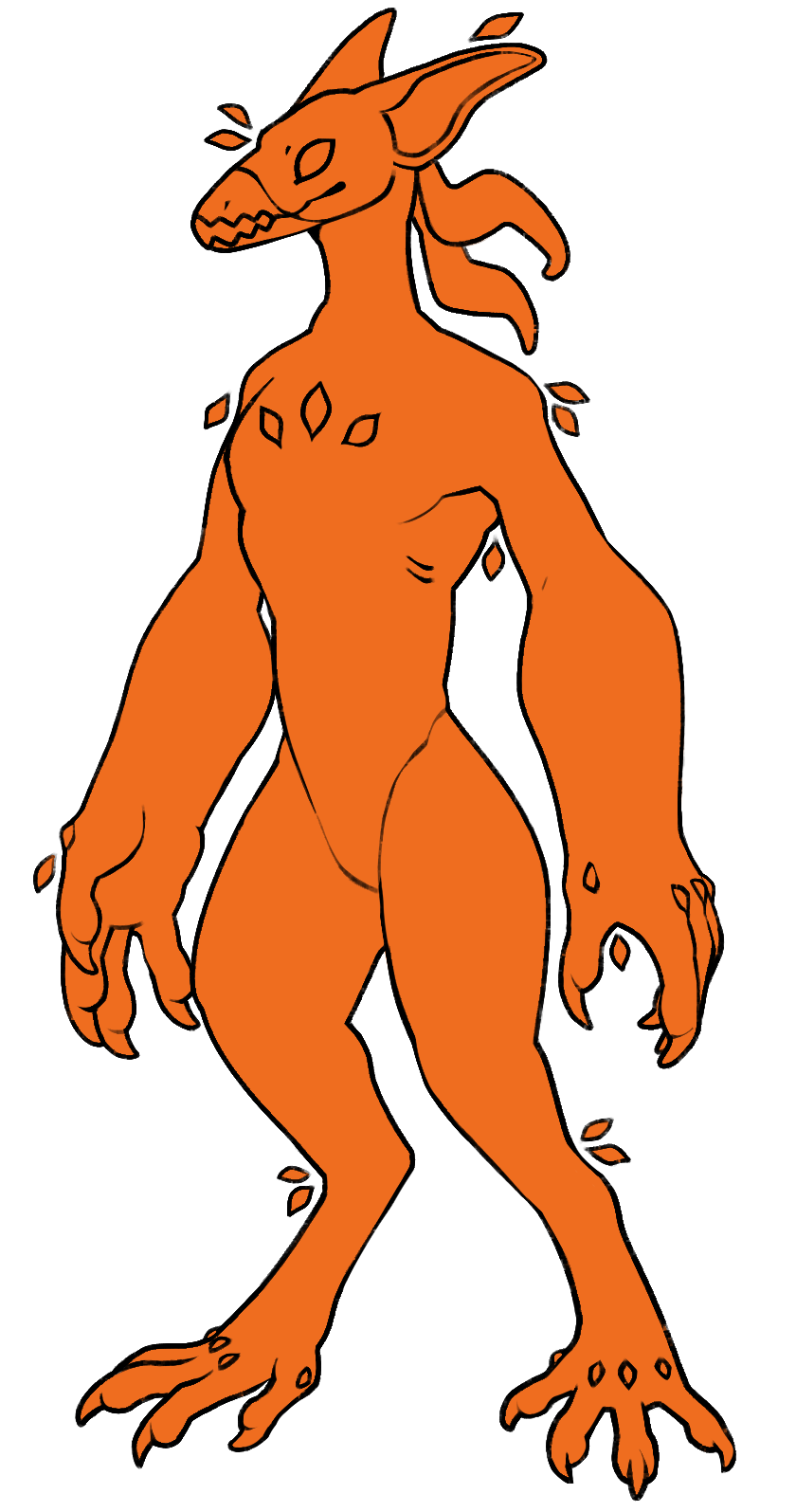
Can be applied by:
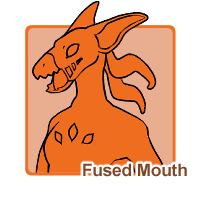
Fused Mouth
(Myth)
Fused Mouth (Crooks) (Myth)
Click to search ML for trait[Mouth is fused via strips of skin]
- Can be straight, zig-zagged, or look semi-goopy
- Mouth can still be opened to some degree

Color-Changing Markings
(Myth)
Color-Changing Markings (Crooks) (Myth)
Click to search ML for trait[Markings that change color for a total of two alternate base colors]
- Markings can change from one color to another, for a total of two different color versions
- Can only be applied to a defined marking, meaning it should not usually apply to pure gradients or base color
- Can change color due to mood, willpower, choice, or otherwise
- Cannot effect markings on top of the base markings
- Does not effect eyes
- Cannot be stacked
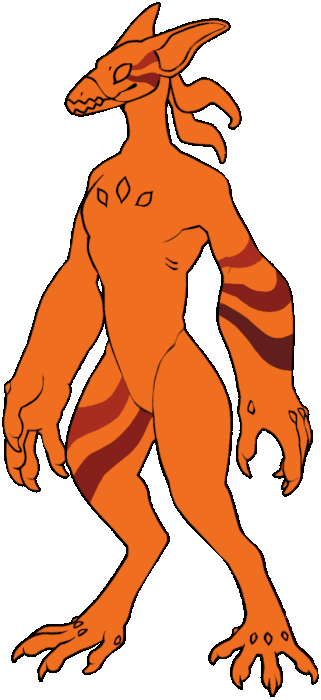
Can be applied by:

Color-Changing Coat
(Myth)
Color-Changing Coat (Crooks) (Myth)
Click to search ML for trait[Base coat that changes color for a total of two alternate base colors]
- Base coat can change from one color to another, for a total of two different color versions
- Base coat is considered the color that all other markings are on top of
- Can change color due to mood, willpower, choice, or otherwise
- Cannot effect markings on top of the base markings
- Cannot be stacked
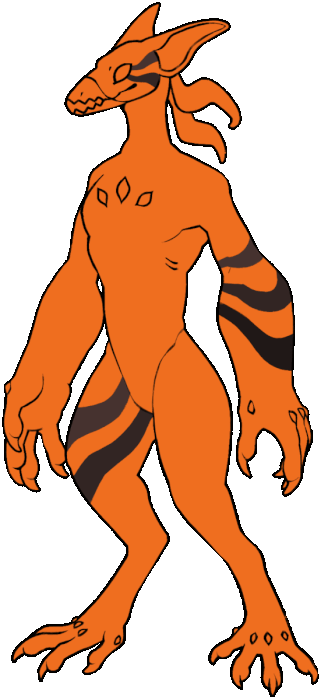
Can be applied by:

Pattern-Shifting Eye (1-5)
(Myth)
Pattern-Shifting Eye (1-5) (Crooks) (Myth)
Click to search ML for trait[Pattern of eyes can change]
- Creates 2-5 patterns that the eye can switch between at will
- Does not require the Patterned Eye trait, as it is automatically included within the trait automatically
- Can apply to both True and Cluster eyes
- Each eye may have 5 patterns unique to that eye. All eyes do not have to share the same set of patterns
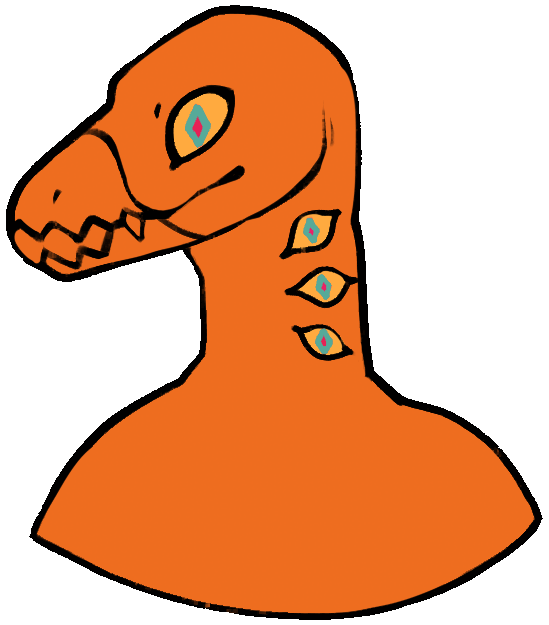
Can be applied by:
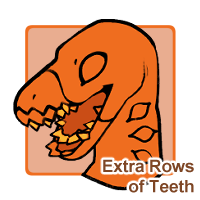
Extra Rows of Teeth
(Myth)
Extra Rows of Teeth (Crooks) (Myth)
Click to search ML for trait[Extra rows of teeth, shown as full rows behind the front row]
- Rows of teeth should be placed behind the main row
- Teeth traits can apply
- Different rows can have different traits, but must have all traits listed
- Up to two additional rows can be added
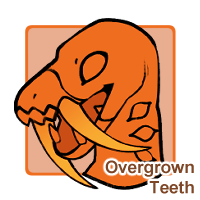
Overgrown Teeth
(Myth)
Overgrown Teeth (Crooks) (Myth)
Click to search ML for trait[Teeth that are very clearly larger than are proportional to the character]
- Can affect certain teeth or all teeth
Can be applied by:
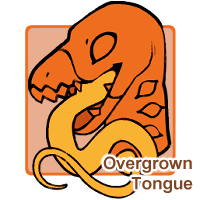
Overgrown Tongue
(Myth)
Overgrown Tongue (Crooks) (Myth)
Click to search ML for trait[Tongue that is very clearly larger than are proportional to the character]
- Tongue length, width, and/or general size is affected
- All traits applied to the tongue may be affected by this trait
Can be applied by:
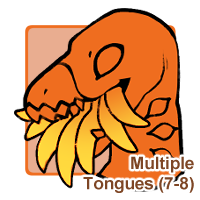
Multiple Tongues (7-8)
(Myth)
Multiple Tongues (7-8) (Crooks) (Myth)
Click to search ML for trait[Adds up to 7 additional tongues apart from their standard tongue for a total of 8]
- Tongues do not need to look visually similar
- All tongues can be affected by one tongue trait [Example: All three can have a shaped tip using x1 use ofShaped Tongue Tip, and do not need to match at all]
Can be applied by:
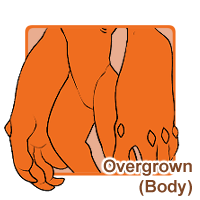
Overgrown
(Myth)
Overgrown (Crooks) (Myth)
Click to search ML for trait[Body parts that are very clearly larger than are proportional to the character. Specific aspects will be listed in the trait's notes on each individual design]
- Can affect both arms [includes forearms and hands], both legs, torso, neck, or more specific traits such as Horns/Spikes
- Affects length or overall size
- Cannot Affect multiple large parts of the body
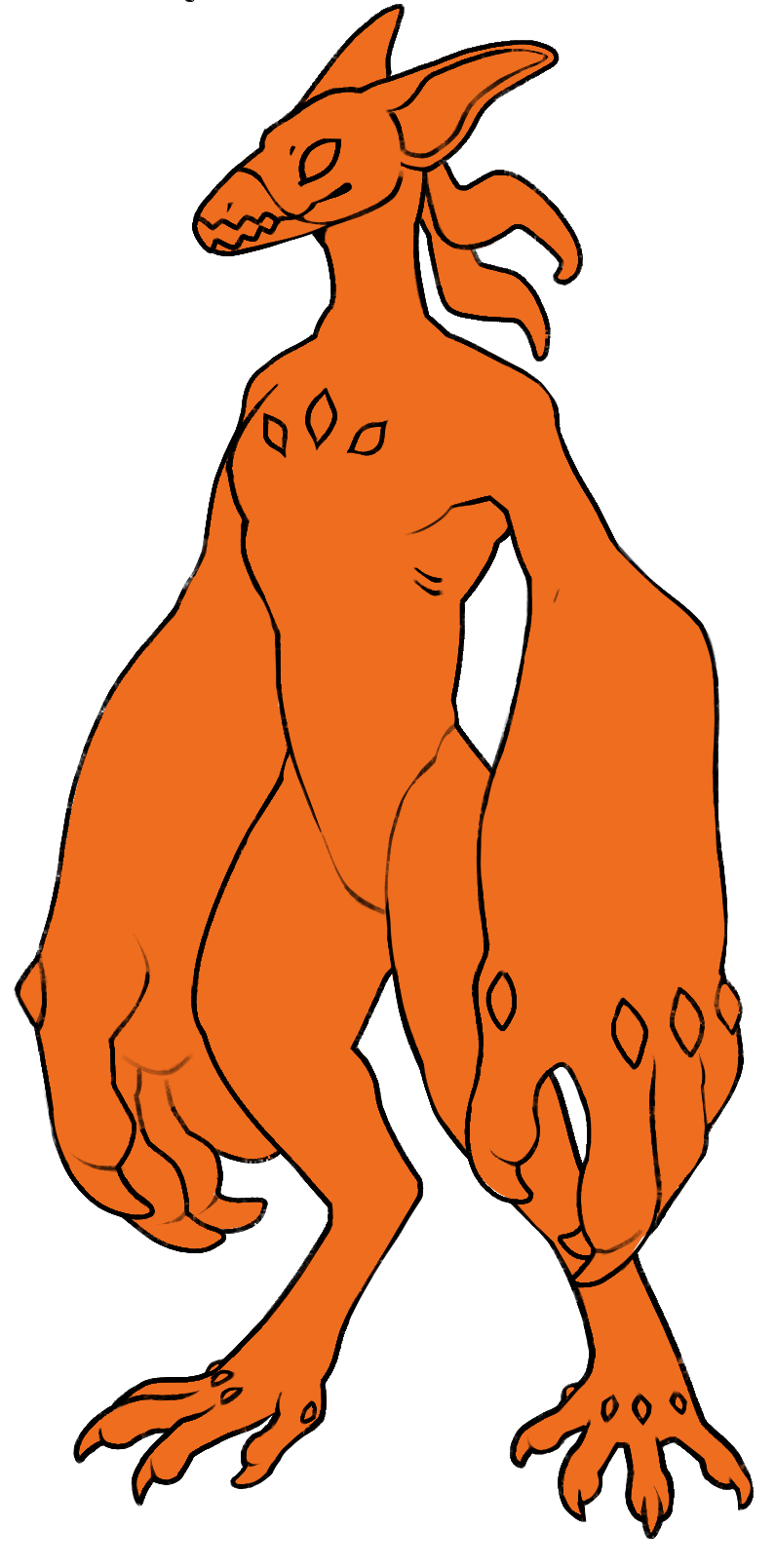
Can be applied by:
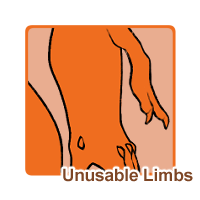
Unusable Limbs
(Myth)
Unusable Limbs (Crooks) (Myth)
Click to search ML for trait[Small additional limbs that have digits/joints that are unable to grab or grip objects]
- Limbs are smaller than standard sizing
- Limbs may be missing fingers, have digits varying in length, and have warped joint lengths.
- Limbs must have claws unless using arthropod host
- Limbs can be anywhere on the body, and be placed asymmetrically
- Limbs may appear as small bug legs if using arthropod host
- Each instance of the traits adds 2 pairs of unusable limbs (four total limbs)
- Cannot resemble standard Crook limb anatomy in shape or size
- Limbs cannot hold or grip objects, and are largely vestigial
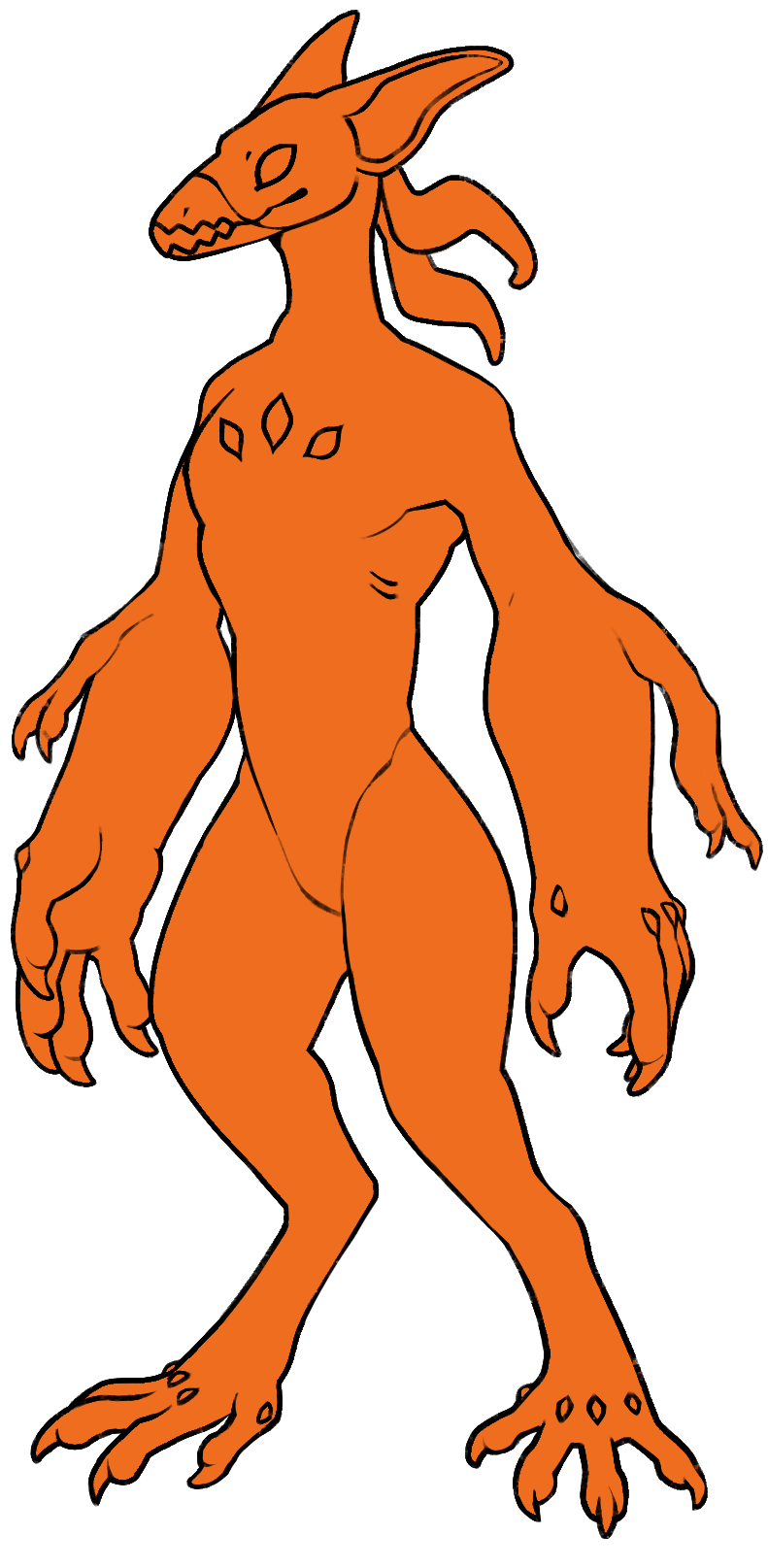
Can be applied by:
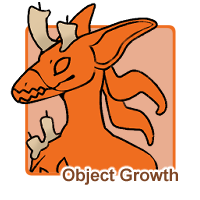
Object Growth
(Myth)
Object Growth (Crooks) (Myth)
Click to search ML for trait[The design grows some form of object across its body]
- Covers one type of object even if that object has more than one material [Example: wires with plastic coating and metallic ends]
- Object Growth includes Object Tail Tip if the tail's object matches the object growth type.
- Objects with multiple parts to it such as chains or multiple materials may be used as long as those parts would naturally appear as part of that object [Example: A lantern may hang from a short chain, have glass paneling, and metal casing. It would not include extra inserts such as candles, but those could be added as accessories]
- If the object glows [Light Bulb] or is metallic [Bell], it can have those effects, but the design would still require those respective marking traits if they were to appear elsewhere on the body.
- Can simulate weapon impalement, but weapon cannot be removed
- Object growth can grow ON but not replace tendrils
- Object growth can replace knucklebones as long as a knucklebone is still represented via the object. Does not make all bones an object
- Plant Growth on top of the body is classified in the following way:
- If a plant type falls under a category listed below, it can have multiple different plants within that type shown on the body with one instance [Example: Flowers may allow the user to have roses, daisys, and tulips with one instance of the trait]
- If a plant type would naturally allow for additional aspects of it, such as a flower with a specific type of leaves, the flower may include those leaves. This does not allow for leaves to then grow elsewhere/independantly, unless accompanied by the flower [Further Example: A branch may also have leaves on it if using a type of branch that includes leaves]
- If a plant is incredibly unique such as bamboo, it may be classified under its own section and allow depiction for what the plant would naturally show.
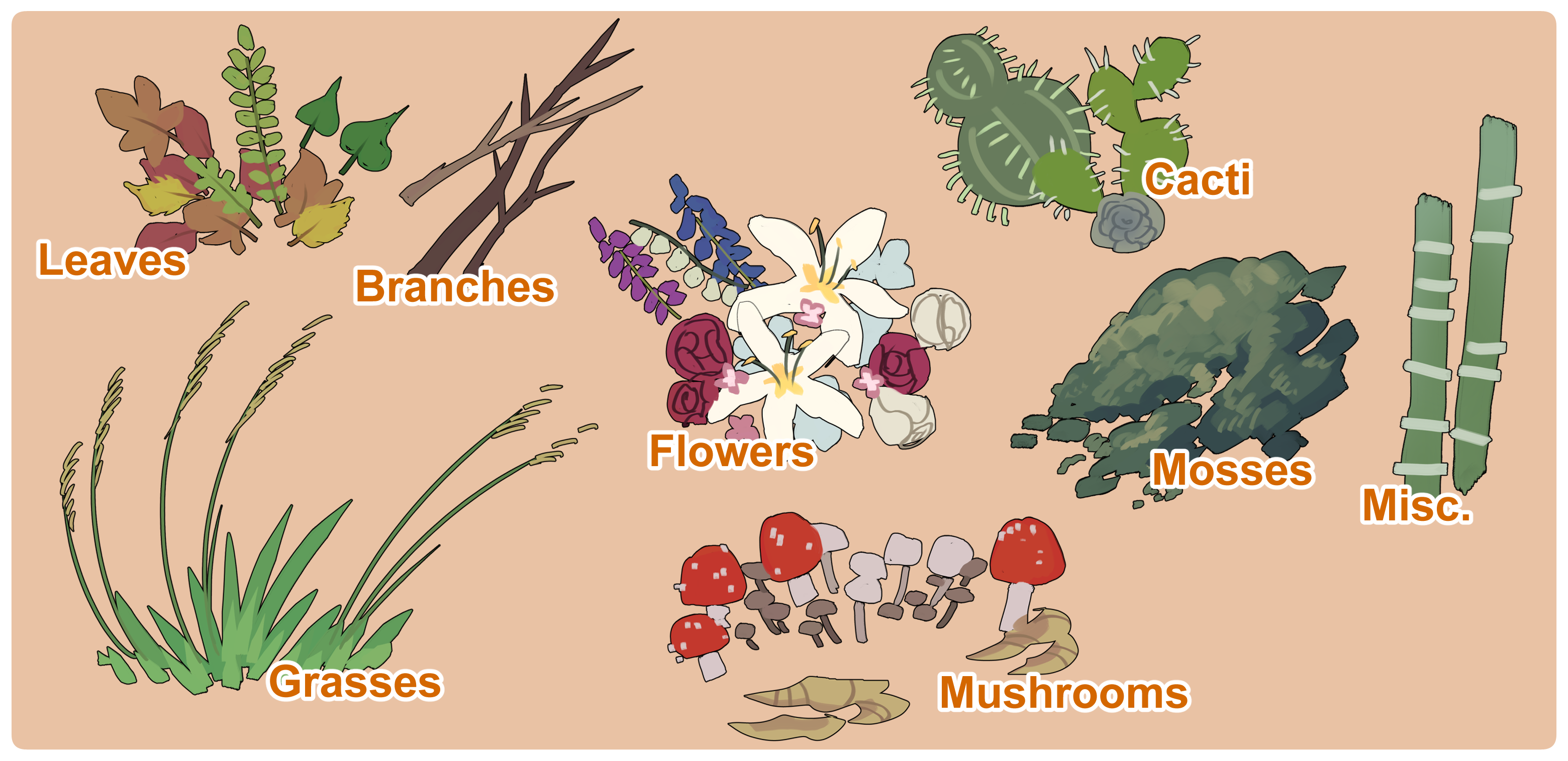
- Object growth should not replace an entire limb, and must appear as though its growing from the body rather than replacing it.
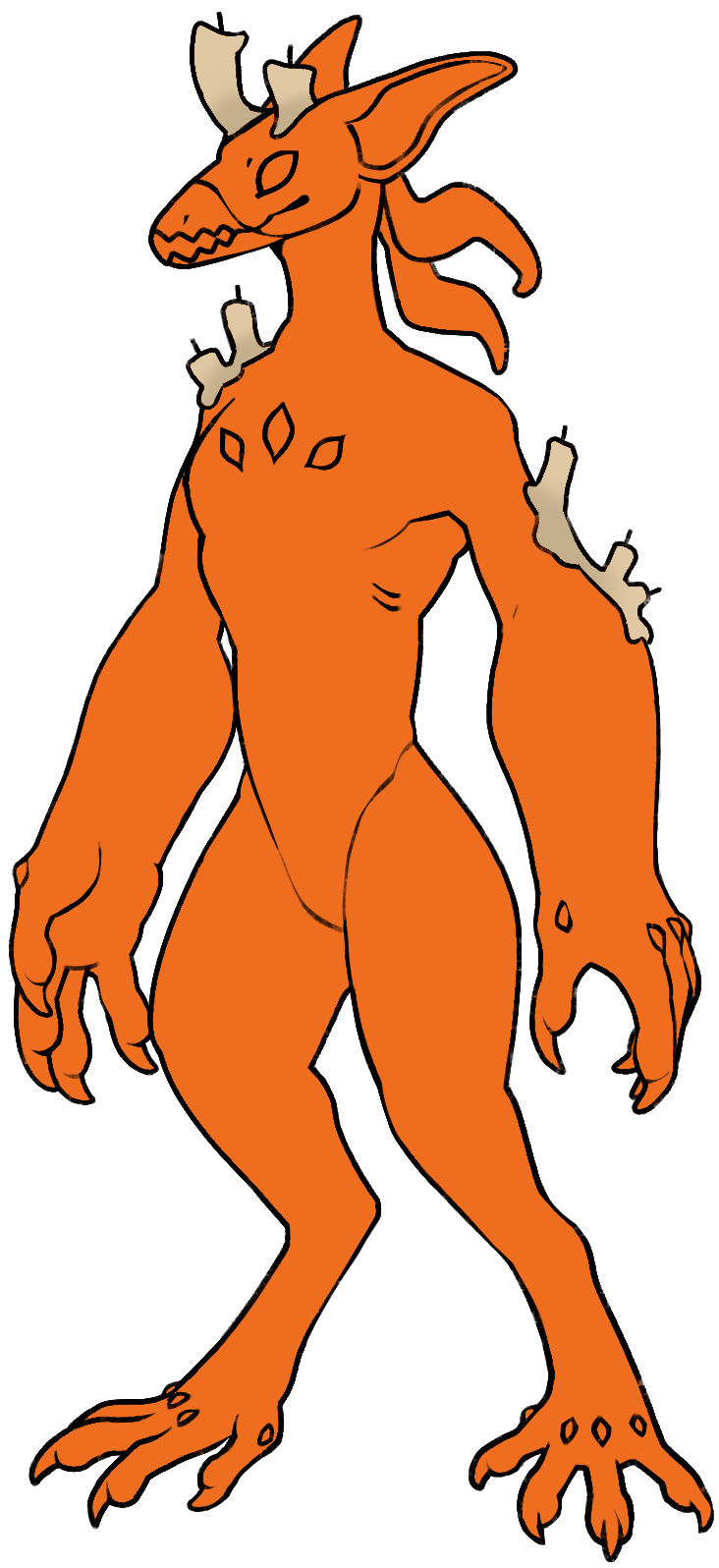
Can be applied by:

Odd-Shaped Tendril
(Myth)
Odd-Shaped Tendril (Myth)
Click to search ML for trait[Tendril is strangely shaped]
- Includes unnatural tapers, non-spike protrusions, natural holes, intricate shapes, and notches.
- Any tendril shape changing traits (Shaped Tendril Tip, Split Tendrils) can be applied to this tendril type freely without needing to use the traits.
- Tendril cannot resemble an object, hand, or creature with this trait
